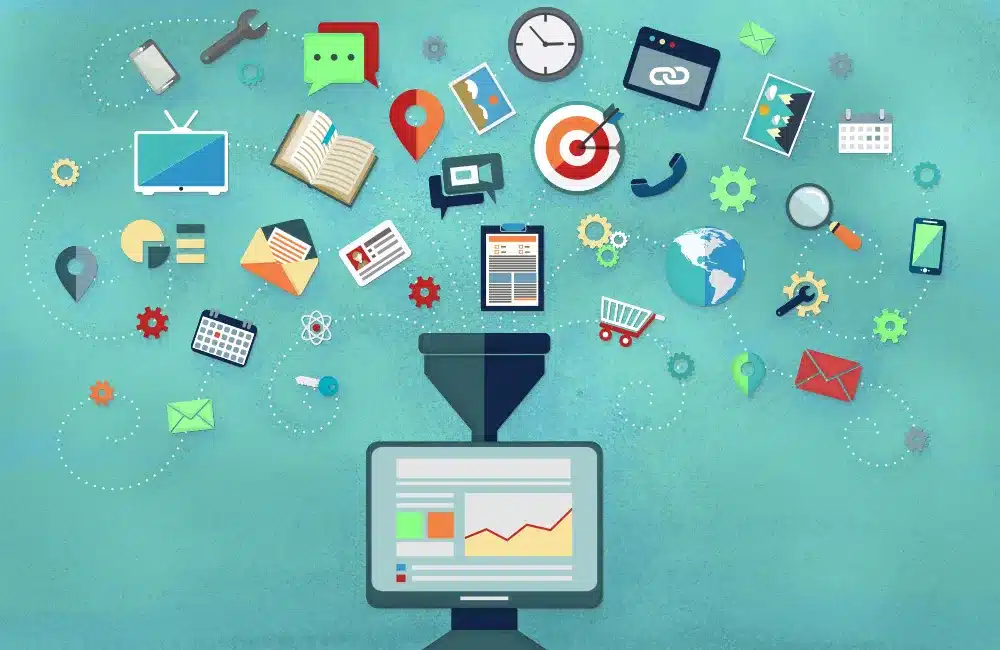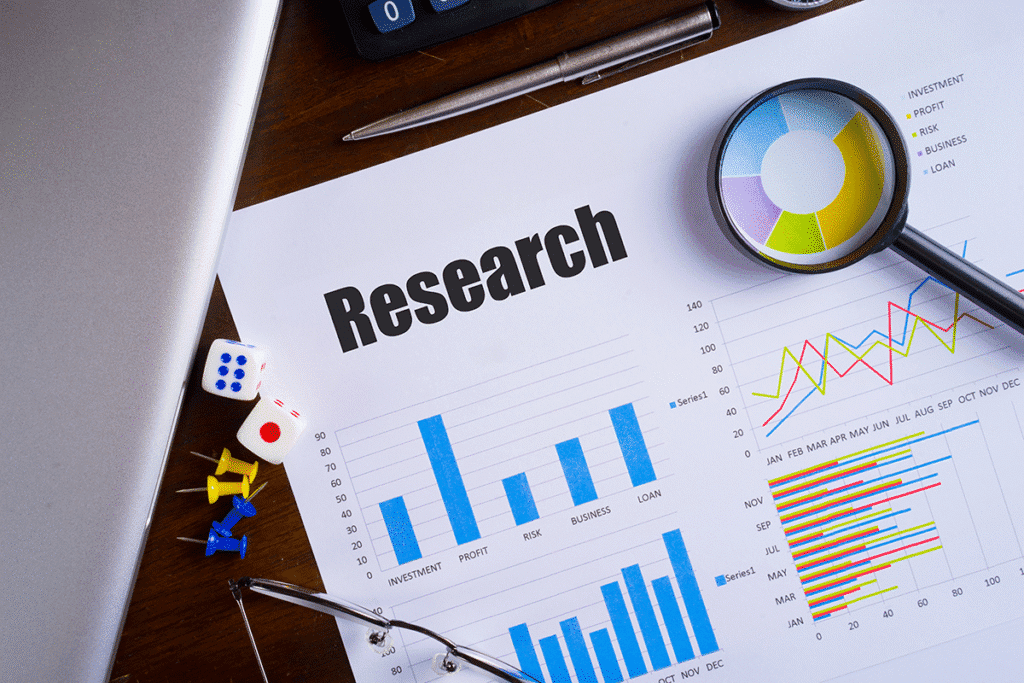What do you do before making any decision in life, big or small? Most of us gather information, compare options, and look for their past and future outcomes. And whatever information we collect while doing so, be it in any format, it’s all data. A strong data set to make informed decisions and calculate future risks and their mitigation methods is a must. The same code applies to businesses, researchers, and policymakers. Even a survey from Harvard Business Review revealed that data-driven strategies result in 3x improved decision-making outcomes than those with less data backing.
So let’s understand what data collection is, some effective qualitative vs quantitative data collection methods, challenges of data collection methods, and what is done to the data after its collection. I will also list some effective data collection tools.
What is Data Collection?
It is a systematic procedure of collecting and gathering information from numerous sources in various formats. Your source can be a person, a study, an interview, a survey, reports, stats, observations, government or private records, etc. And it can be any form of data like numbers & figures, audios, videos, photographs, multimedia, and so on. Effective collection of data can help you reduce errors while making any decision, and come up with spot-on, reliable, and suitable insights about the subject and objectives at hand.

Types of Data Collection Methods
Effective data collection methods are broadly classified into two main categories: primary vs secondary data collection. Each method under these two categories serves a different requirement. Let’s elaborate on each one so you can easily identify best practices in data collection for yourself.
Primary Data Collection Method
It is referred to as the primary collection method because it involves dealing with the sources on a firsthand basis, where you directly interact with respondents or make observations.
1. Surveys & Questionnaires
A collection of structured data from a large group of people serves best for quantitative research, customer feedback, and market research.
2. Interviews
The interview method in data collection is a one-on-one or group conversation between the data collector and respondents. The conversation can be formal, informal, or candid. It can be structured in a flow, semi-structured, or unstructured. Used in qualitative research.
3. Observation
Researchers keep an eye on and track subjects in natural or controlled environments. It’s a useful methodology in studying behaviors, patterns, and interactions. Example: You can be a subject of research at your home, as somebody researching psychoanalysis or behavioral patterns (of course, with legal and ethical considerations).
4. Focus Groups
These are small groups sharing a common belief system and ideology about something; here, small group discussions are guided by a facilitator. It can help venture attitudes, motives, reasoning, and perceptions in depth.
5. Experiments
Studying cause and effect relationships while conducting controlled testing of variables. It’s a common scientific, medical, and product testing research method.
6. Field Trials/ Pilots
It’s a testing of products, services, or procedures in real-world scenarios before launching them on a large scale. Example: If there’s a new mobile device to be launched by a company, it is often first given to the company employees or members to use and provide feedback about its pros and cons before a grand launch in the market.
7. Case Studies
It’s an in-depth investigation about a particular subject, organization, or event. It involves people and paper-trailing, delivering qualitative and quantitative insights.

Secondary Data Collection Methods
It is a study of precollected and documented information by others. It is a time-efficient, cost-cutting method that also provides a base for further research. You can raise questions and have multiple P.O.Vs for your research on the same topic. Moreover, you can identify gaps or even challenge widely accepted norms and assumptions based on this secondary information.
1. Official Government Data
Government publications and reports, like census data, labor statistics, health surveys, economic reports, and more. This data is highly considered for demographics and policy-related studies.
2. Academic Research Papers & Journals
These are basically advanced forms of study material which include peer-reviewed articles, thesis, and dissertations. It can be a supporting pillar to build theoretical frameworks and serve as supporting evidence.
3. Books & Reference Materials
Subject-specific guides and textual data provide historical data, past context, and future assumptions.
4. Business & Industry Reports
These are some of the most important secondary data sets for market study to identify valuable competitive insights and industry trendnos. These can be financial statements, annual reports, whitepapers, and official company statements.
5. Online Databases & Digital Libraries
Examples like JSTOR, Statista, World Bank Data, and PubMed offer a huge archive of organized and regulated research and statistics.
6. Media Sources
You can equip yourself with updated and timely information as your secondary data from newspapers, magazines, e-news websites, and credible online portals about events, current happenings, and public opinions.
7. Company Records
One can smoothly analyze an organizational performance of any firm by studying its sales and inventory logs, customer databases, HR files, and internal reports.
8. Non-State & International Organization Reports
Organizations like the WHO, UN, IMF, NGOs, and nonprofits are often a reliable source of data used in development, health, and global research studies.
Quantitative Research vs Qualitative Research – Overview
Understand the difference between quantitative and qualitative research and the methods used to carry out that research.

| Aspect | Qualitative Research | Quantitative Research |
| Nature of Data | Descriptive, non-numerical (words, observations) | Numerical, measurable, statistical data |
| Purpose | Explore meanings, experiences, and motivations | Measure, test, and quantify variables |
| Approach | Subjective, interpretive | Objective, statistical |
| Sample Size | Small, focused groups | Large, representative samples |
| Outcome | In-depth understanding, theories, and insights | Generalizable results, patterns, predictions |
| Common Methods Used | Primary: Interviews (unstructured/semi-structured), Focus Groups, Observations, Case Studies Secondary: Academic Journals, Books, Media Sources | Primary: Surveys & Questionnaires, Structured Interviews, Experiments, Field Trials/Pilots Secondary: Government Reports, Industry Reports, Online Databases, Company Records |
Also Read: Top Data Science Projects for Your Portfolio From Beginner To Advanced
What is Done After Data Collection – Post Process of Data Collection
Post process is a crucial process, because it’s not just about data collection, it’s about how the collected data is handled, processed, managed, and executed for a fruitful and purposeful use. Some key steps are:
1. Data Cleaning
Data cleaning involves the removal of errors, duplicates, and incomplete responses so there is no skewed data. It helps to ensure accuracy.
2. Data Organization
To categorize data into types, formats, and align them in accordance with databases or spreadsheets for easy study.
3. Data Analysis
Applying qualitative, quantitative, or mixed approaches to derive patterns and insights. This step transforms raw data into meaningful information that can mark trends and correlations.
4. Data Interpretation
Here, we link results to research objectives and business goals to work out solutions. It’s about finding the ‘why’ behind the data, not just the ‘what’.
5. Data Visualization & Reporting
It’s a process of making the data understandable and readable in a structured manner by presenting it through charts, dashboards, or reports. Visuals are often a better way of grasping and retaining information.
6. Data Storage & Security
The most important and crucial step in post-processing the data, safeguarding information with proper backup, securing, and controlling access to maintain confidentiality, is utmost necessary. Data storage practices must adhere to data protection regulations.
7. Decision-Making & Execution
This is the final step in data post-processing. After collecting data and running it through the above steps, you can now extract end insights to solve problems, acknowledge theories, and back blueprints.
Challenges in Data Collection
1. Accuracy & Reliability: Many times, information provided by respondents can be incomplete, biased, false, or misinterpreted. Secondary data sources can also be outdated and inconsistent at times.
2. Accessibility Issues: Some populations are hard to reach, and many times accessing patented databases or government records is not a piece of cake. The biggest example is a real incident-inspired movie, Spotlight, where it was difficult and risky for investigative journalists to get hold of church records and official documents to uncover widespread and heinous abuse. This very well points out challenges in obtaining sensitive or restricted data, which hides the truth.
3. Time & Economic Constraints: Primary methods like interviews, experiments, and focus groups are demanding in resources. They require a notable amount of time and money to be planned and executed.
4. Ethical & Privacy Concerns: Reaching out to someone for their personal or sensitive information raises concerns around consent and data privacy and protection. As mismanagement can lead to legal or reputational harm, and deliberate inappropriate use can fully destroy an individual or organization’s reputation.
5. Data Management Complexity: Handling large and multimodal data sets is a complex process requiring advanced tools. You can’t let duplication, loss, or misinterpretation occur; hence, maintaining a proper system is essential.
Data Collection Tools
| Method / Type | Tool Name | Purpose / Notes | Verified Source / Reference |
| Surveys & Questionnaires | Google Forms | Free, cloud-based surveys, easy to use | Google Forms |
| SurveyMonkey | Advanced surveys with analytics & reporting | SurveyMonkey | |
| Typeform | Interactive, visually appealing forms | Typeform | |
| Qualtrics | Enterprise-level surveys & robust analytics | Qualtrics | |
| Interviews & Focus Groups | Zoom / MS Teams | Conduct virtual interviews or group discussions | Zoom, MS Teams |
| Otter.ai | Transcribes recorded interviews | Otter.ai | |
| Dovetail | Analyzes qualitative insights from interviews/focus groups | Dovetail | |
| Observation & Field Data | KoboToolbox | Mobile data collection for field research | KoboToolbox |
| Epicollect5 | Offline mobile data collection, ideal for remote areas | Epicollect5 | |
| iAuditor | Inspections, checklists, and observational data collection | iAuditor | |
| Secondary Data / Databases | Statista | Market & industry statistics | Statista |
| World Bank / IMF Data | Economic, demographic, and social statistics | World Bank Data, IMF Data | |
| PubMed / JSTOR | Academic journals and research papers | PubMed, JSTOR | |
| Google Scholar | Quick access to published studies & reports | Google Scholar | |
| Experiments & Analytics | SPSS / R / Python | Statistical analysis & quantitative research | SPSS, R, Python |
| Tableau / Power BI | Data visualization & analytics | Tableau, Power BI | |
| Qualtrics Research Core | Combines survey data with analytics for experiments | Qualtrics Research Core |
Conclusion
From the above insightful all-about journey of data collection, it is very clear that it is the key foundation in conscious decision making, adhering to research accuracy and organizational success. By understanding the difference between primary and secondary data, the advantages of data collection methods, and making the best use of reliable tools, individuals and businesses can have meaningful findings and take the right actions. By understanding various practices in data collection, you have also learned how to choose a data collection method as per your needs. There are relevant challenges and limitations in the process, but careful planning and mapped use of data collection methods could constitute a significant advantage in deep learning & understanding, and seeing measurable results across fields.
Happy learning! Happy researching!
Related Reads: The Future of Big Data with AI Integration
Also Read: Top Open-Source Data Analytics Tools for Smarter Insights





